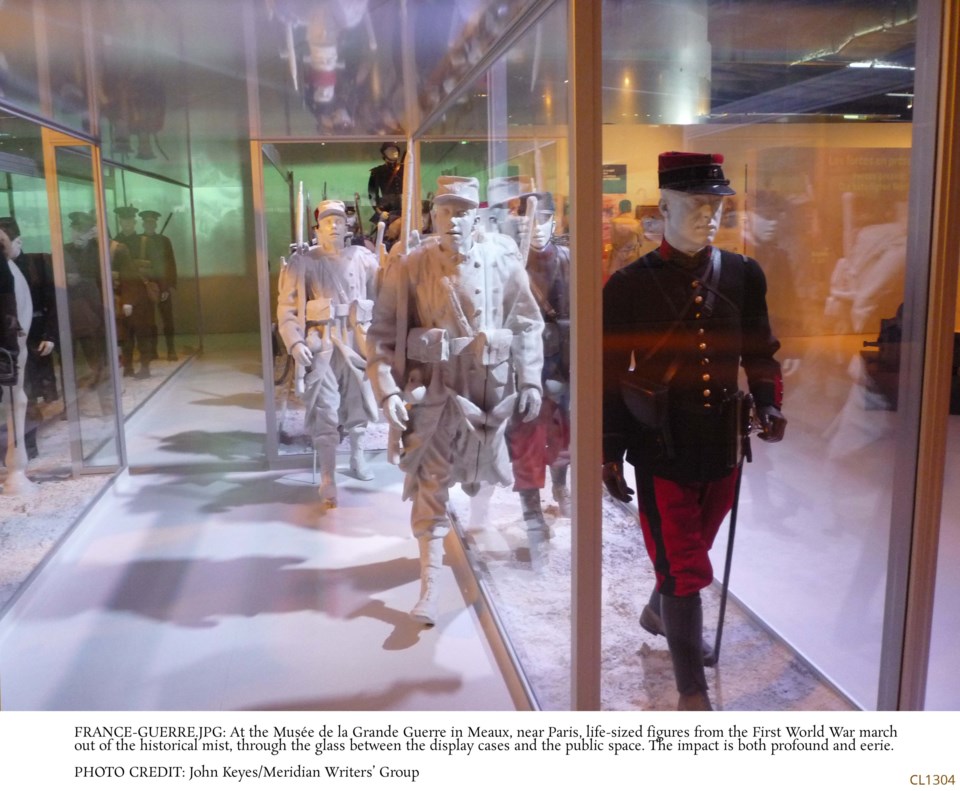MEAUX, France — Great museums are more than simply big buildings housing large collections of rare exhibits. The best ones employ ingenious interior design and thoughtful way-finding to present visitors with a compelling narrative that enhances the material on display.
La Musée de la Grande Guerre is one such museum. Located at Meaux, a half-hour by express train east of Paris, it has as its overarching subject the sprawling, horrific, multi-headed beast known as the Great War, a topic not easy to encapsulate.
But the MGG views this theme through the prism of the Battle of the Marne — two battles, actually, the first in 1914 and the second in 1918, which involved American troops and turned the tide of the war.
The museum is built on the site of the first battle, the closest the German line got to the City of Light. Historians of every stripe can thank a Frenchman named Jean-Pierre Verney for it.
He was a war buff who privately amassed some 50,000 artifacts, which were acquired in 2005 by the Meaux regional government on the condition that they be properly displayed as an educational opportunity for future generations. Only one-third of the collection is on view at any given time.
Verney’s vision has been brilliantly fulfilled. Visitors enter a low-slung, modernistic silver slab of a building overlooking Meaux and are immersed in a windowless labyrinth that painstakingly reconstructs the war to, supposedly, end all wars.
The self-guided tour starts with a zigzag exhibit recalling the military ethos instilled in young French boys in the 19th century, segues into the political crises that triggered the First World War, then opens into a series of galleries that tell a story of mass suffering and dubious glory. There are uniforms representing the 35 nations that fought in the war, dioramas of French and
German trenches, a collection of vintage propaganda and innumerable armaments ranging from pistols to bombs dropped by hand from primitive aircraft.
Two things stand out. One is a gallery that recalls the life of those in the trenches. Between spasms of terror and death were days and weeks of crushing boredom, and this gallery’s 18 casements and wall units contain examples of how the soldiers’ irrepressible creativity was expressed during those tedious hours.
There are writing implements fashioned from bayonets, cigarette lighters from grenades and cartridges, mandolins and banjos from helmets and gourds, intricately carved canes and walking sticks, erotic artwork, religious talismans, homemade board games and playing cards. Meanwhile, video screens show authentic silent newsreel footage, both candid and posed, of life at the front.
And throughout the museum, platoons of life-sized figures march out of the historical mist. There are 62 of them, plus three officers on horseback, and they come right through the glass between their display cases and the public space.
Rendered in white polyester and resin, these statues are a ghostly presence, as if the museum is haunted by the some of the nearly six million French military dead or wounded.Their impact is both profound and eerie.
For more information on the Musée de la Grande Guerre, visit museedelagrandeguerre.eu. For information on travel in France, visit the French Government Tourist Office website atfranceguide.com. More travel stories can be found at culturelocker.com.



